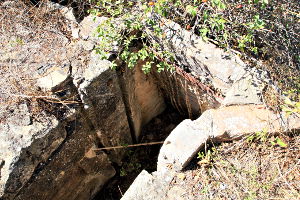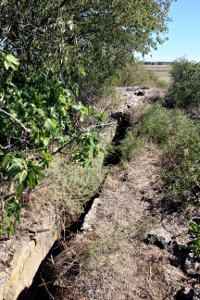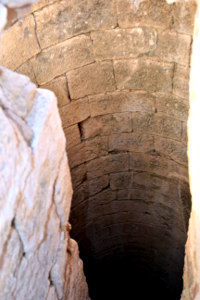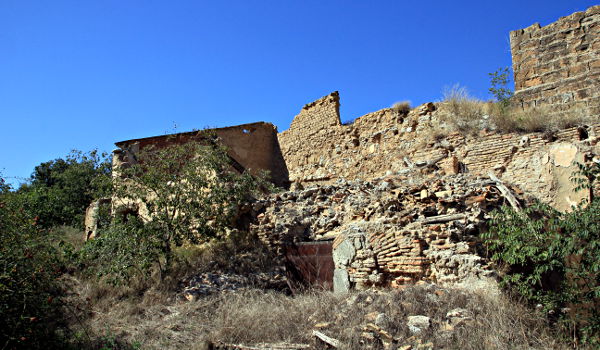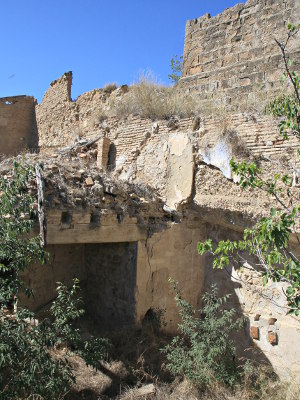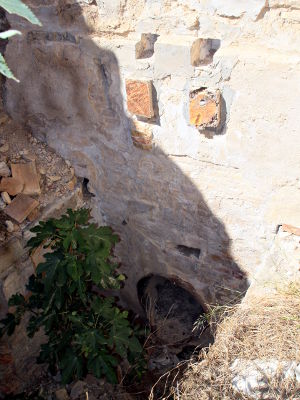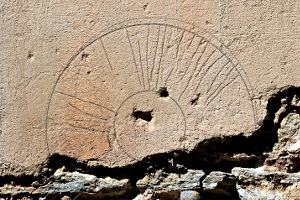Path: Introduction -
Visit the mills; catalogue - Alcampell (upper mill)

Mills in Alto Aragón — molino harinero
Alcampell

Alcampell is a village in the
Litera region. The mill —known as Molí de Dalt de Falaguer— is situated at the far eastern border of Alcampell near the N-230 which
is the main artery between , the and then France. Coming from ,
drive southwards for about 22 km where you'll find a branch to the right. It is the A-1240
leading toward and . This road meanders slightly to the right and then
left again and at the turning point you should find remains of the older road at your left hand side.
There is a huge agro-industrial complex at the right. There is some space to park your vehicle at the left.
Pictures: 09.viii.2012, 25.viii.2015


